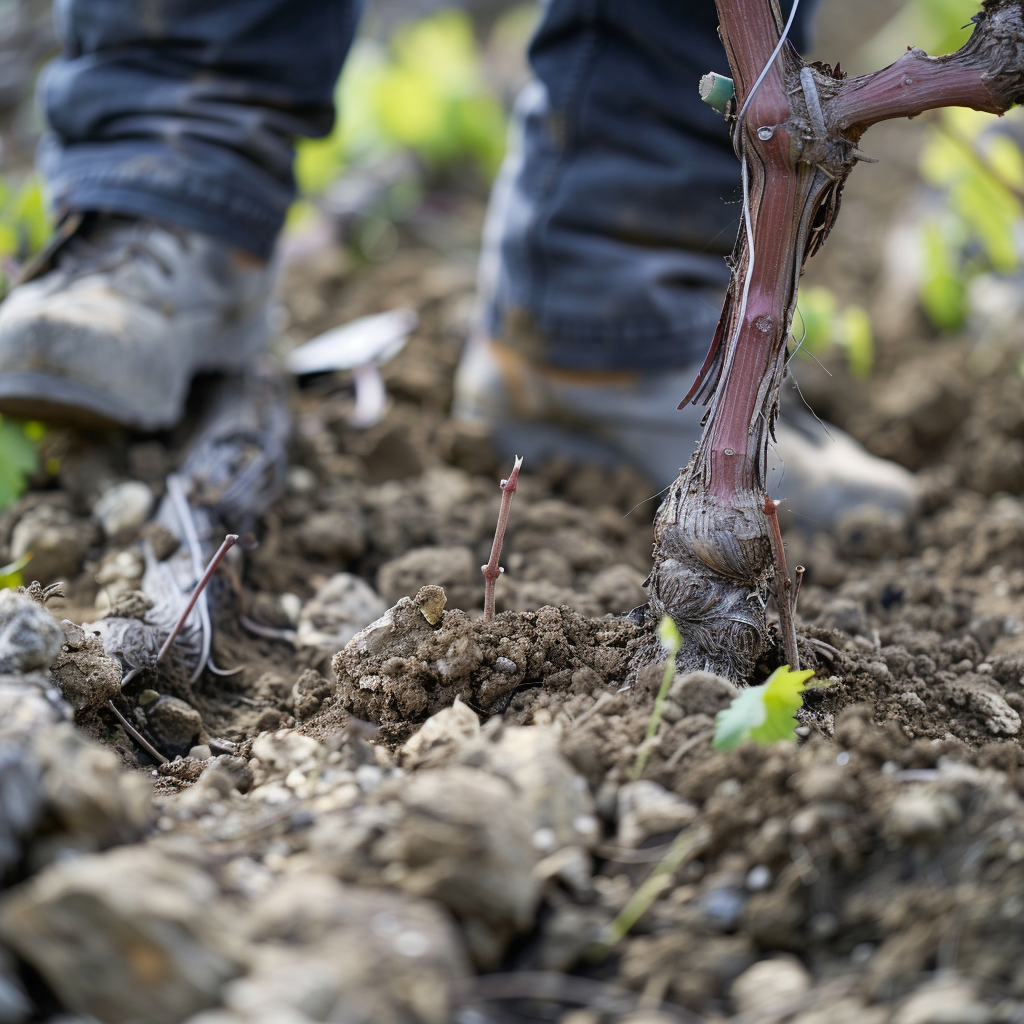3. Preparing the soil for planting
Grapevines are perennial plants that we seek to maintain as long as their production capacity permits. Once they drop below a certain production level, there is no longer any economic reason to keep plots that are too old. However, in practice this is what we have been doing for many years, which explains why the average age of our grapevines is over forty years (with extremes varying from 1 to 80 years). But these particularly old vines produce unparalleled grapes which are essential because of their contribution to the wine’s profile and quality, which far exceeds what would be expected given the size of their yields. Yet an exhausted vineyard is nonetheless doomed to one day be torn out and replanted. Although our single-crop agriculture prevents us from practising regular crop rotations, at this time, our Agro-Synergic principles require us to conduct deep and extended soil inversion and to delay replanting by 3 to 5 years.
This does not mean leaving plots to lie fallow, but rather regenerating certain soil functions which have been exhausted by single-crop farming in the past by implementing radically different crop sequences. This practice has several objectives:
- Restore sufficiently high levels of organic matter in the surface layer of the soil by increasing the accumulation of nitrogen (growing leguminous plants such as hairy vetch, red clover, sainfoin, associated with grains such as oats, barley and wheat) to restore more complex and dynamic microbiota, eliminate any virus-transmitting nematodes by planting these same crops in association with white and yellow mustard, which contain nematicidal properties;
- Extensively restructure soil porosity without deep mechanical tillage by cultivating plants with pivoting root systems that are more or less dense and deep.

The root systems of cover crops planted
If necessary, we also believe we can use these methods to eliminate excess copper that has accumulated in the soil over more than a century by planting naturally bio-accumulative species (Grevillea exul) which will then be harvested and exported (phytoremediation).
We take advantage of this opportunity to correct the topography of the plots, which are generally bell-shaped to facilitate natural drainage on the surface. If any soil changes are required, the surface layers are isolated temporarily before being returned to their original locations. Deep soil layers are never brought to the surface in order to protect the original characteristics of our terroirs.
We then systematically use modern techniques to install an underground drainage system that eliminates temporary excess water in late winter and in the spring in clay and silty clay soils in order to prevent the grapevines from experiencing root stagnation in the surface layers. This way, when the roots resume their deep exploratory growth in the spring, they are much more likely to explore all the soil’s resources and be more resistant to water stress during the summer by drawing the water they need from the layer of clay molasse which lies beneath our terroirs. We often find ancient drainage systems in the form of clay pipes in the region, which are now replaced by more efficient and durable materials. This is an expensive investment, but it is intended for the very long term.

